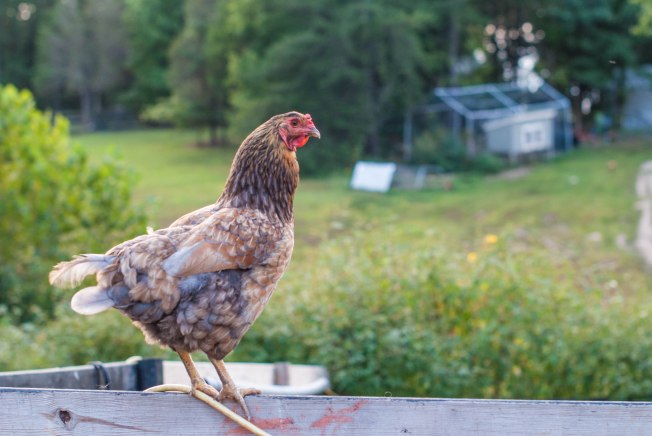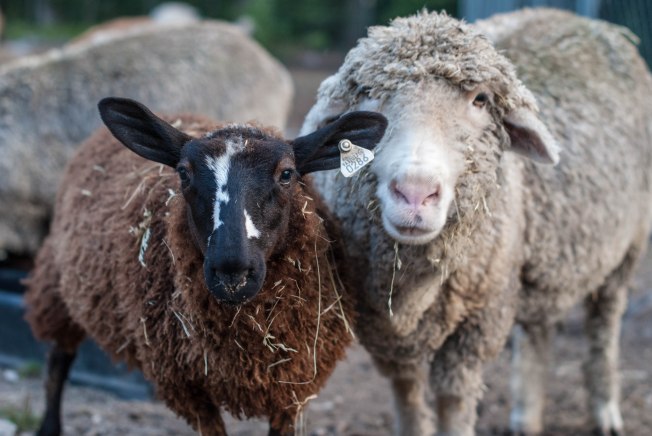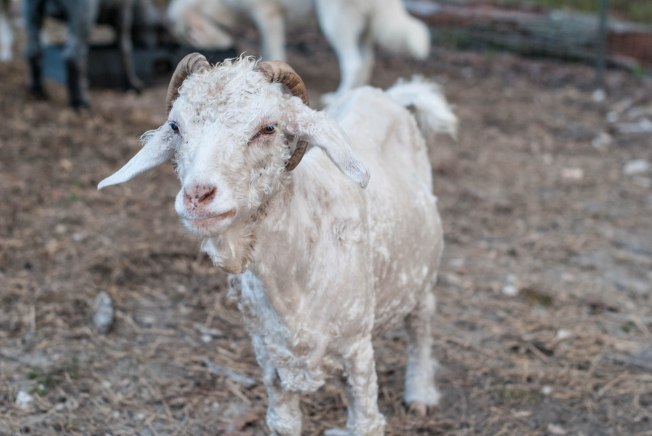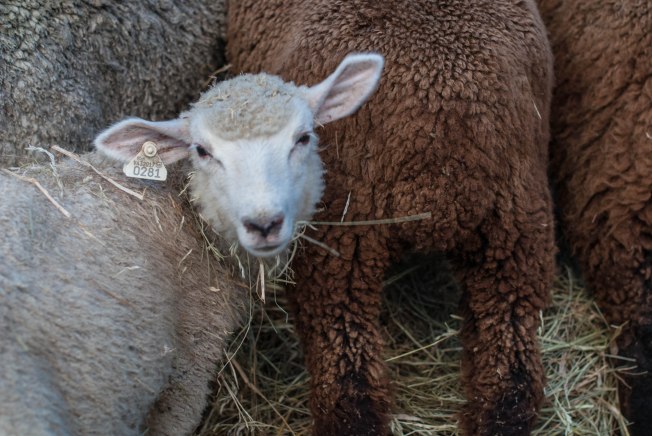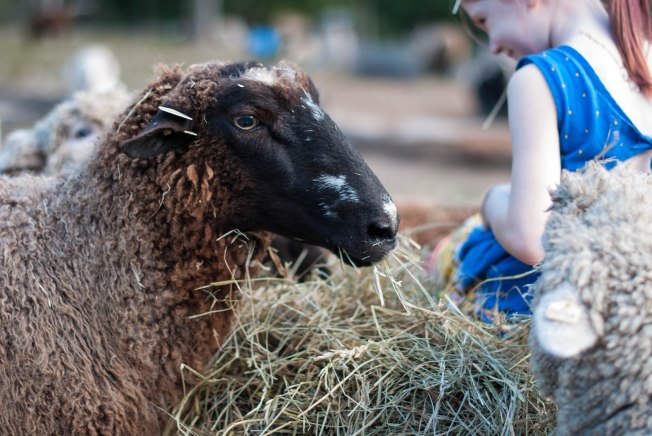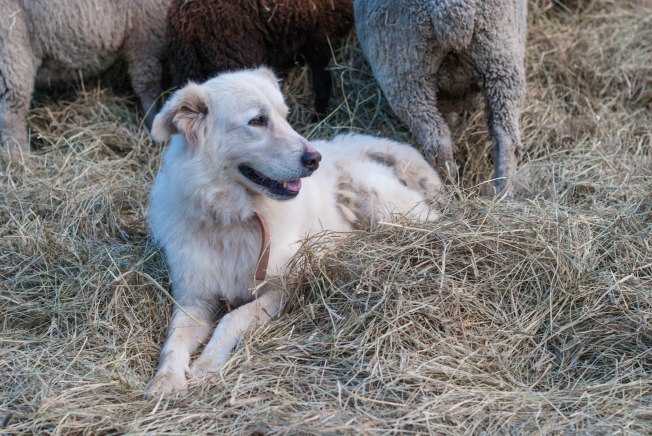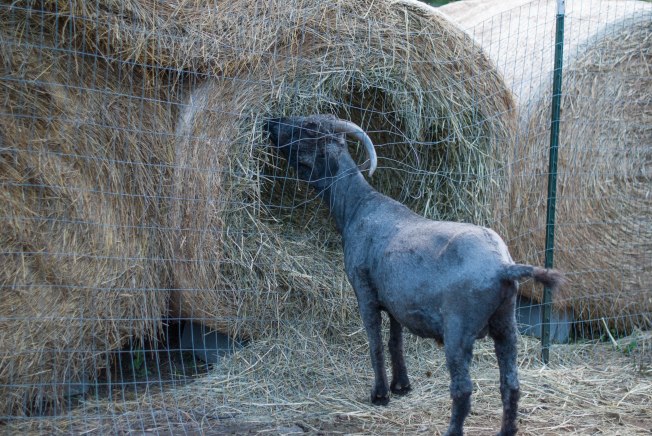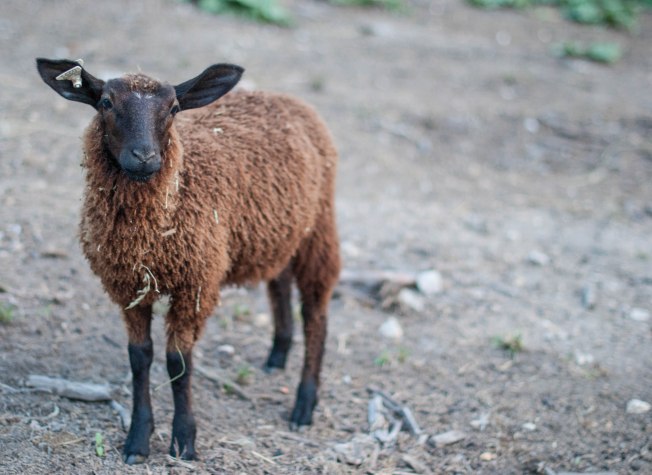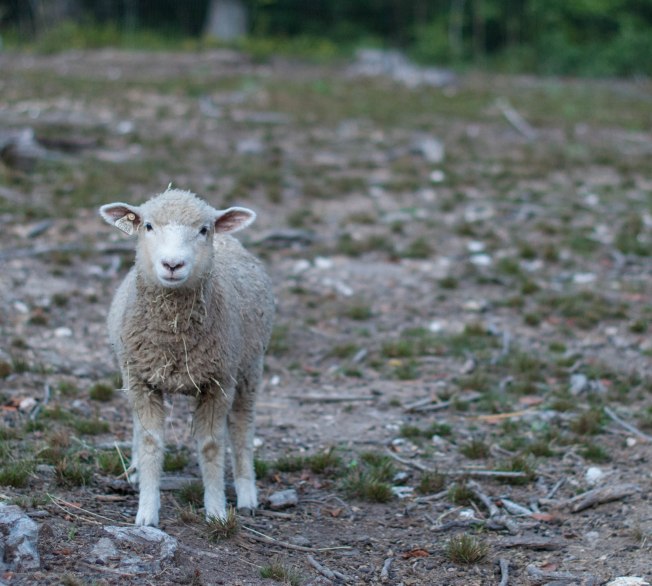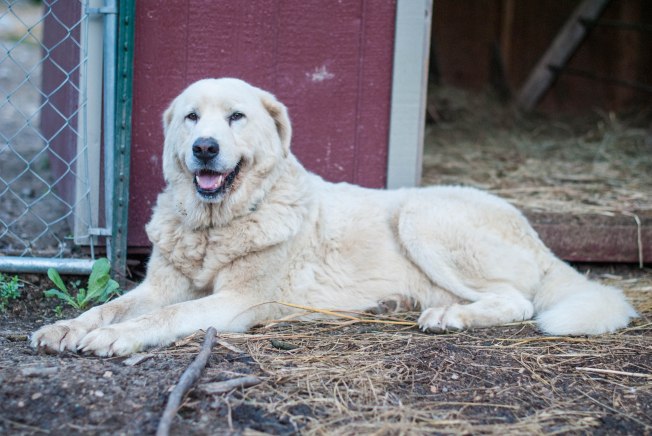Early fall is upon us (at least in terms of farming and shepherding!). It’s time to start making lists of all the work that has to be done before the weather turns cold (and dare we say – snowy?).
First on the list was getting the Angora goats sheared. Their fleeces grow so very fast that they get sheared twice a year, as opposed to the sheep who are sheared only in the spring. Since the summer was so mild there was some concern that the fall would turn cold quickly, so we wanted to get the goats done early enough to grow back just a bit of fleece before we get any chilly temperatures.
Emily came down a few days ago and unfortunately once she set up the skies turned dark and the thunder began. We whipped through getting them sheared and the fleeces bagged and got no pictures. But I took some this evening after feeding time, though not all the newly-naked ones were cooperative (I’m looking at YOU, Martin and McPhee!).
Wembley and Margaret (or Sad Margaret, as we call her, since her ears tend to droop down and her fleece covers her eyes in a way that makes her look perpetually morose)
Miss Hannah. Doesn’t she look velvety with her new ‘do?
Roquefort, the Silver Fox
Keswick
Cassie
Lucy
The goats have worked a hole in the fence by the hay. Not because they don’t already have a fresh hay bale sitting conveniently out in the field or anything.
Wimbledon
Monticello
Fettuccine the Wonderdog
Soon we’ll be cleaning manure out of the field to till into the gardens for next year, scrubbing out the water troughs, winterizing the chicken coops, and setting up a winter pen for the flock.
Right now we are enjoying spending time outside with the flock in these glorious early fall temperatures. Stay with us awhile, fall!

